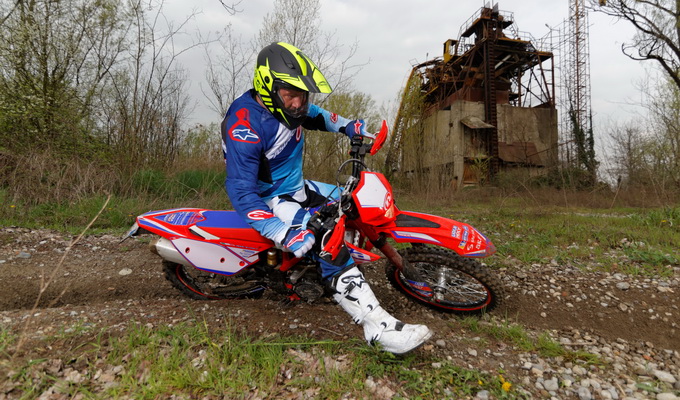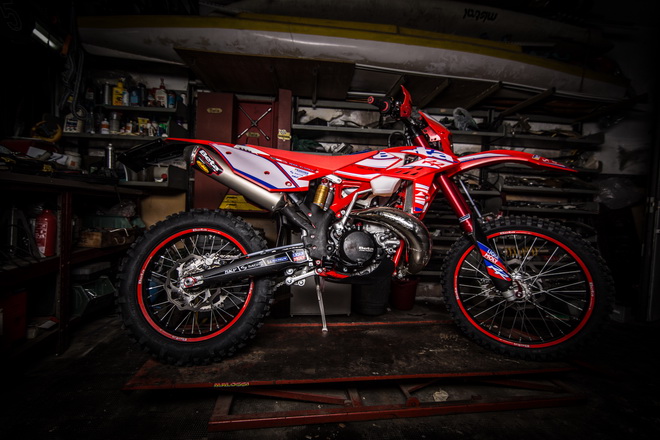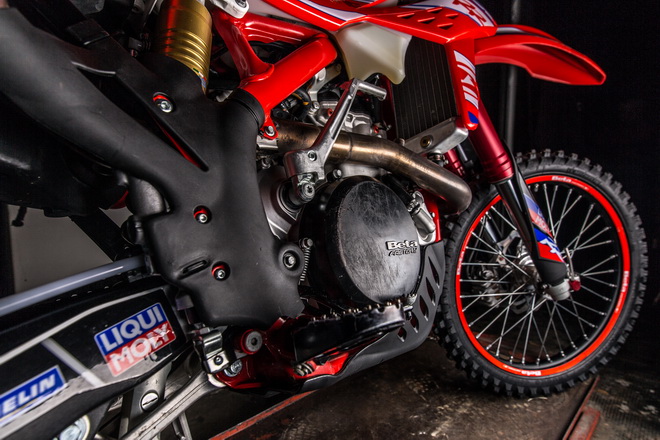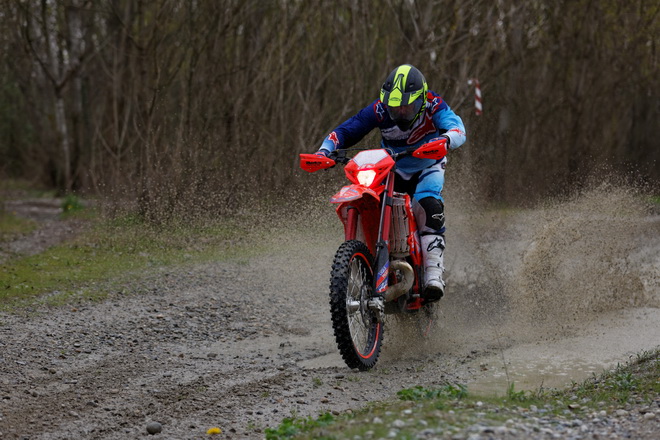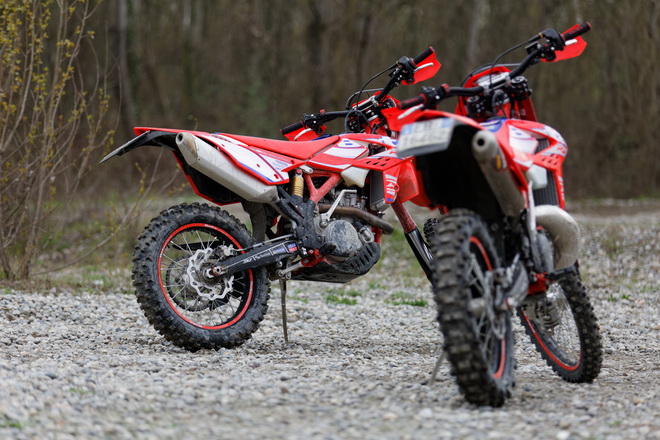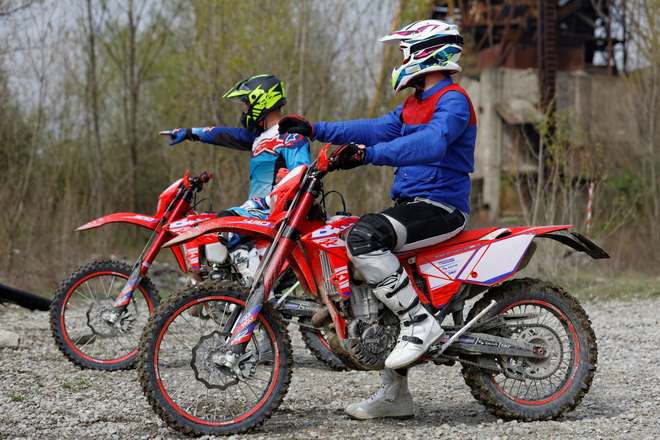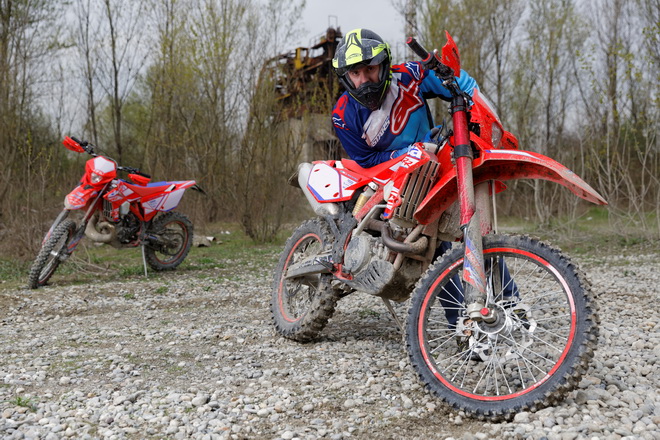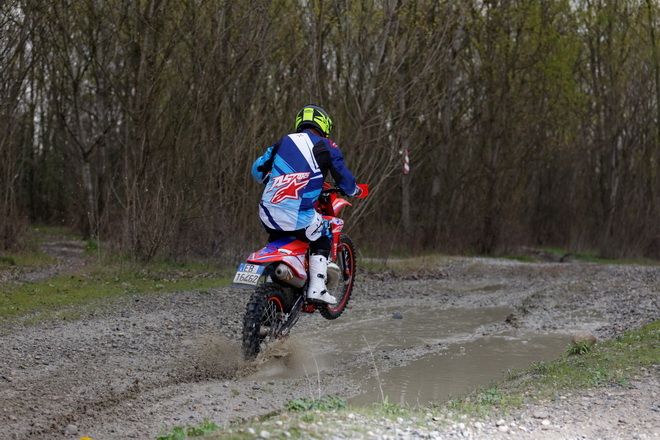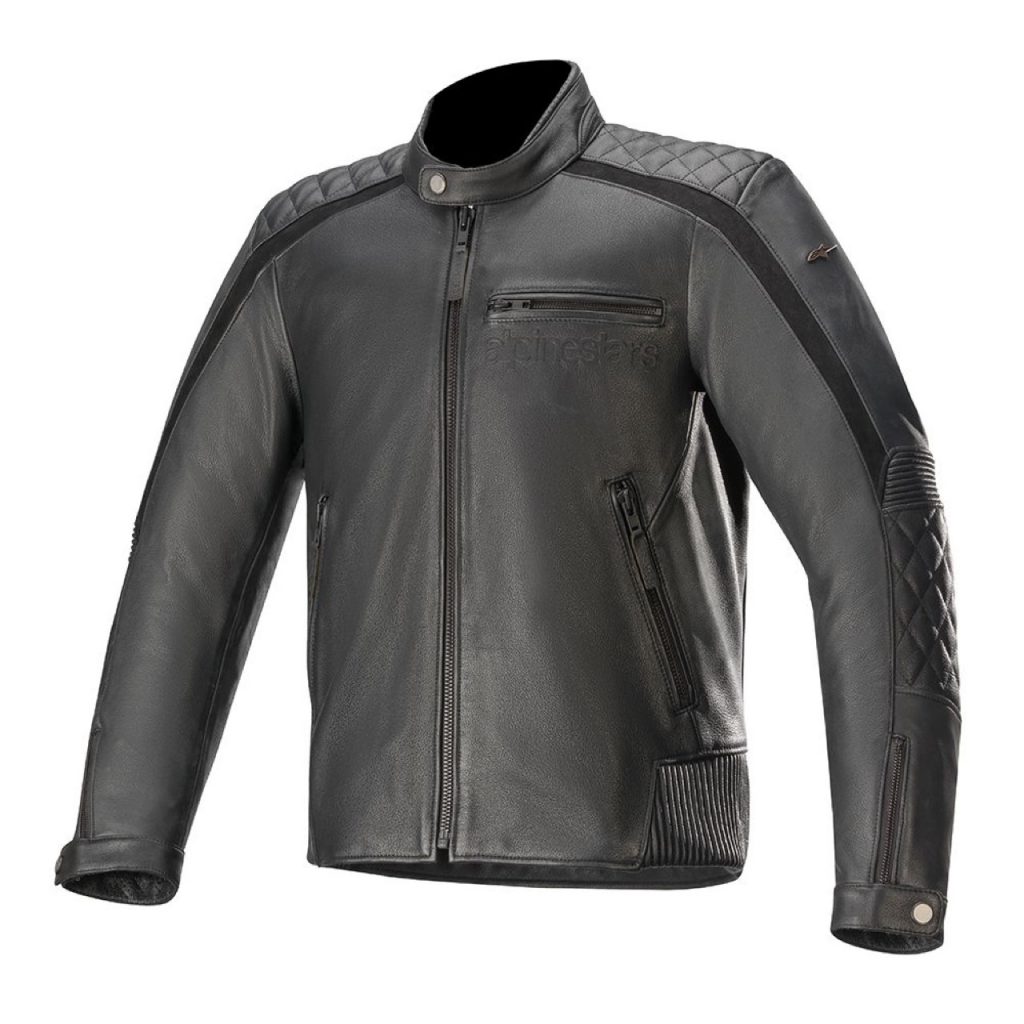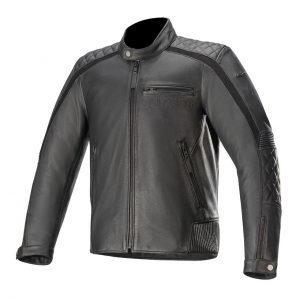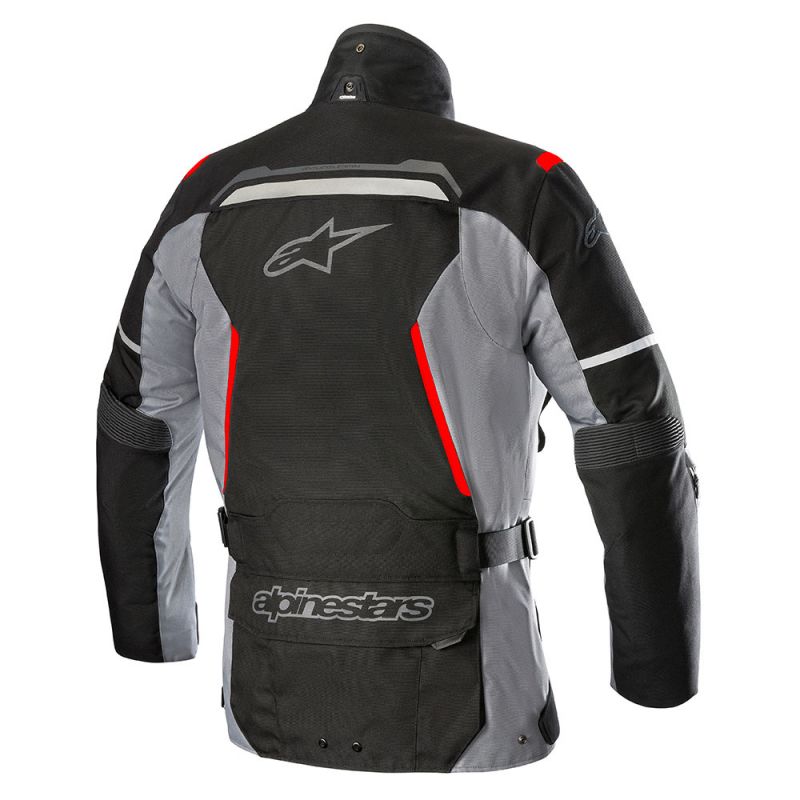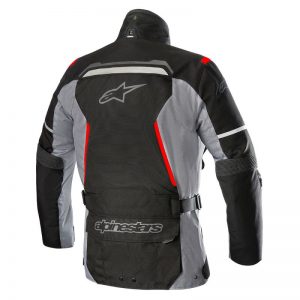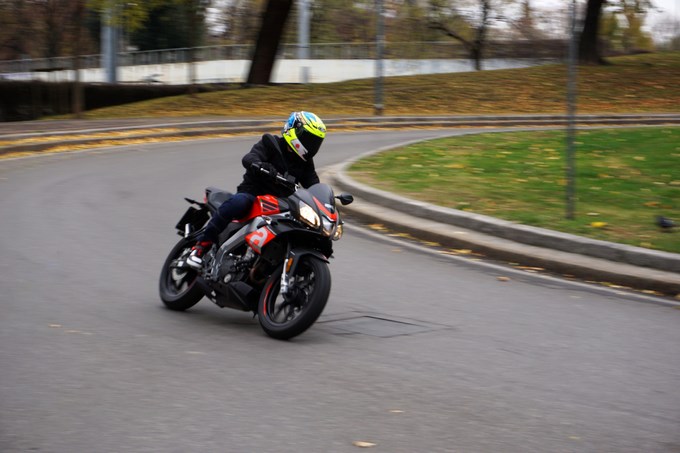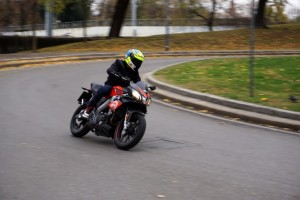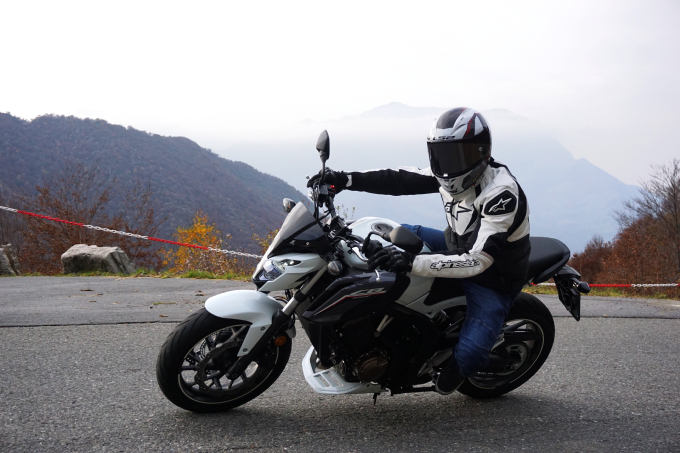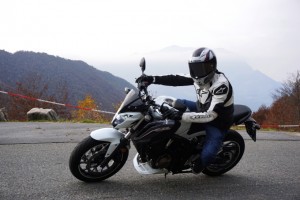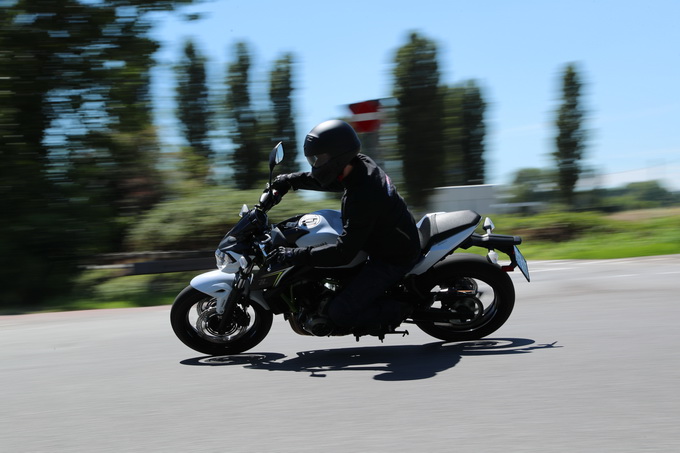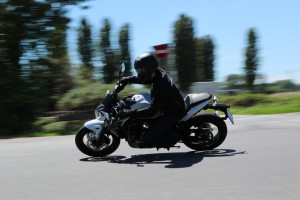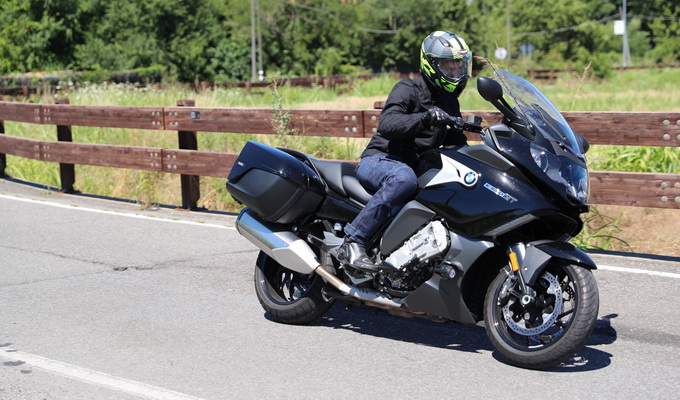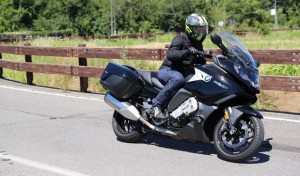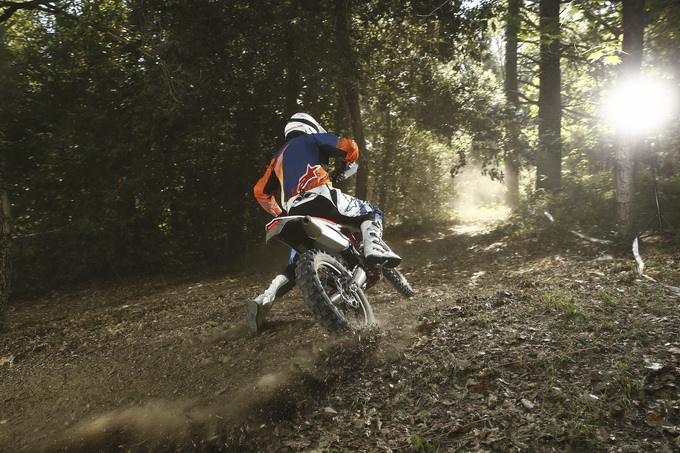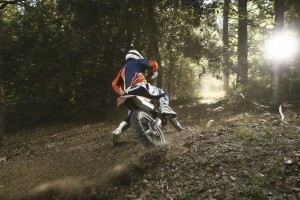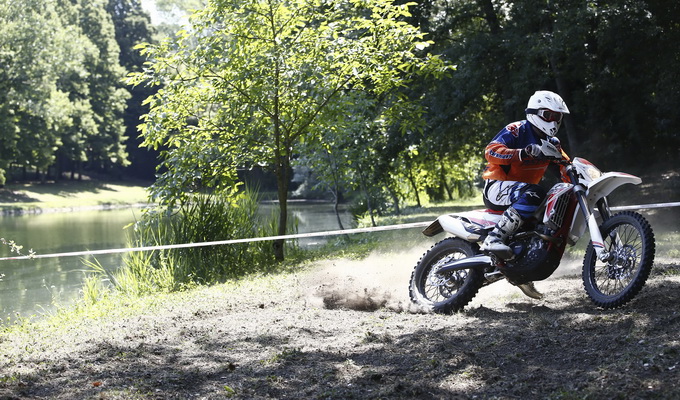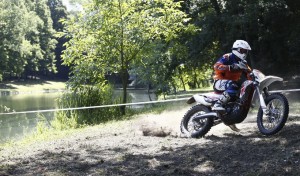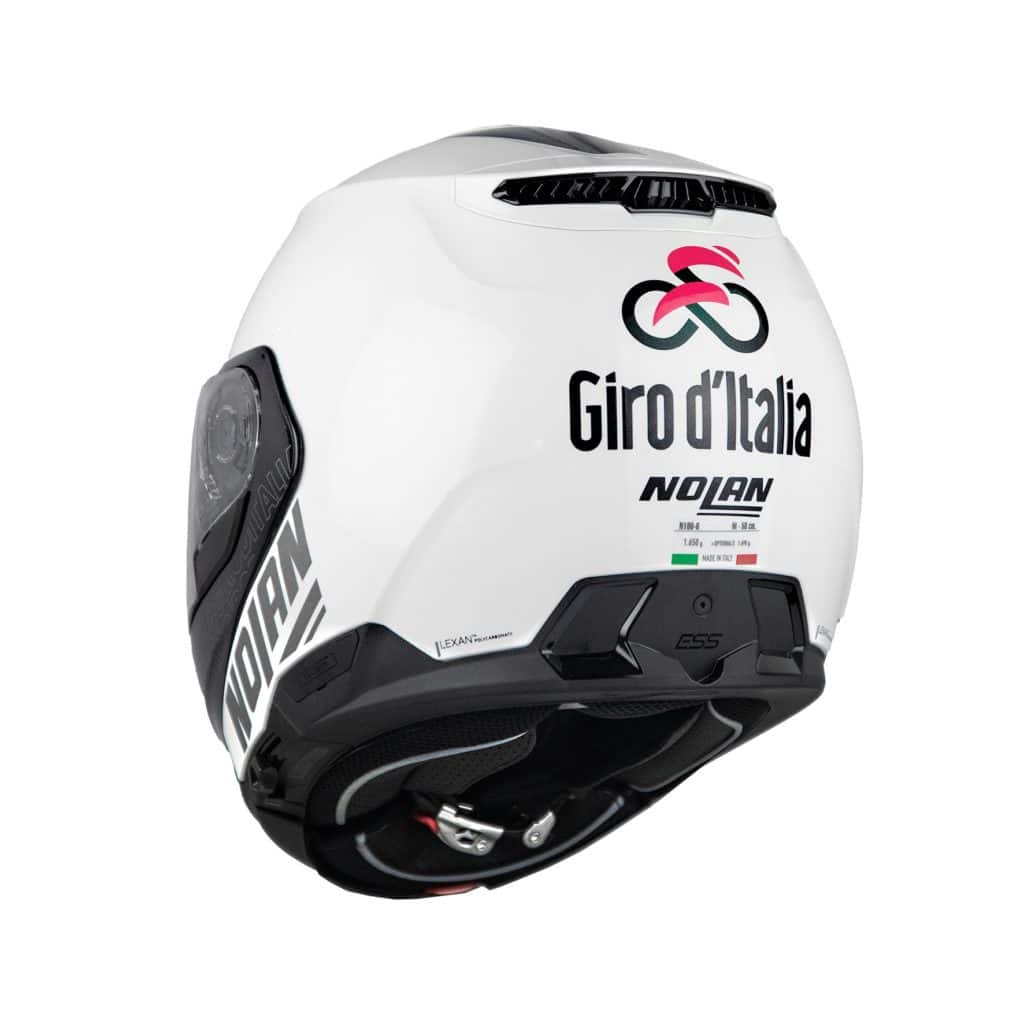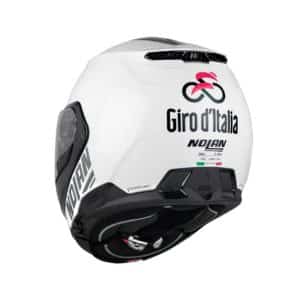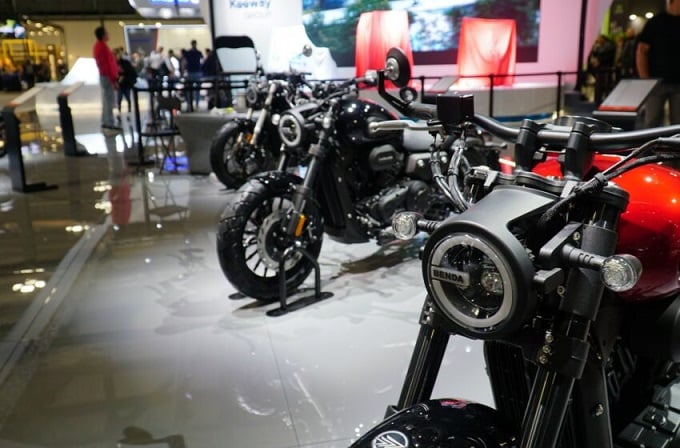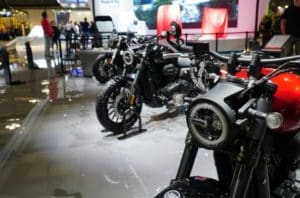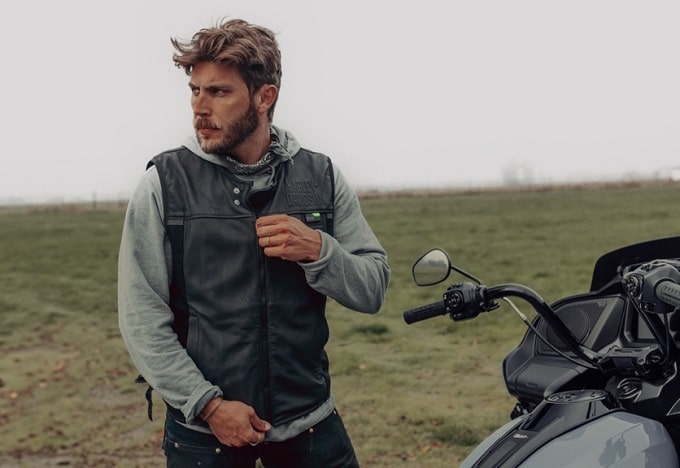Beta Enduro RR 300 and 430 Racing MY2016, the Italian choice [ROAD TEST]
We tested and compared the 2 and 4 stroke
Photoshoot: ENGINEER
Tester: Marco “AGO” Agosti
Collaborator: Tomas Del Campo
Beta Enduro RR 300 and 430 Racing MY2016 – Let's start with a premise to tell you about a peculiarity of this test. Normally we pick up the bikes or they bring them to us "whole" and in working order. With Beta, however, it has arrived a courier with two large boxes, almost like Santa Claus. Inside there were obviously the two protagonists in all their beauty, well packaged and with the handlebars removed. So, between opening the box and discovering the shapes and details under the bubble wrap, we seemed to have the same curiosity as a child unwrapping a much-desired gift. First the 430-stroke 4, then the 300-stroke 2, just to leave the best for the end. Because in the end we didn't make the choice about which of the two is the best, but on an aesthetic level, that exhaust from the Californian FMF is a real jewel, perhaps the most striking of the many that embellish the look of these two bikes. The charm of that lucid expansion that has almost the sensuality of the physical shapes of a beautiful woman.
Once the handlebars and the two front masks with the headlights have been mounted, the two rivals are ready to start up. The first good news comes from the fact that despite the essentiality of these Racing versions, more extreme and equipped with top-of-the-line components closely derived from the racing fields, both the RR 430 Racing and the RR 300 Racing they don't give up on electric starting. While the latter sacrifices the automatic mixer on the altar of the Racing spirit, which imposes lightness and essentiality, given that what is not there cannot be broken. In reality, from this year the 2-stroke Beta range does not use a banal mixer, but a more innovative system with an oil pump, which perfectly calibrates the quantity of oil to be mixed with the petrol, which thus drops to an average figure of approximately 1%, while we respected the classic 2% for the mixture used. Our hypothesis is that we preferred to wait for the transition to this innovative technology also for the Racing bikes, but that if there are no reliability problems we will soon see it on the entire range. The choice of whether or not to renounce electric starting is one of the most debated since ever, but now, with the motor and battery reduced to the extreme in terms of size and weight, even professional drivers prefer a small ballast to the major waste of time that you would have to restart the bike with the crank after a fall instead of with the electric ignition. We enjoy technological progress and start the two bikes with the convenient button, just to enjoy their sound, without having to wear boots to do so. There is no key or even a switch, the ignition turns on simply by pressing the start button and the ignition is instantaneous and without hesitation. Also here another advantage for the 2-stroke, because the sound appeal undoubtedly beats that of the 4-stroke. To make matters worse, the immediate response to the throttle, given by the lower inertia of this type of engine, which increases and decreases revs without any delay, with an exciting progression, even if the bike is still stationary!
First impression
Still with bowls still we cannot fail to notice the many gems of these two Beta Racing, starting with the Sachs closed cartridge fork with red anodized sliders. This is the result of the collaboration between the Italian company and the German company, which produces this fork based on Beta specifications and thanks to its racing experience, but also to mathematical simulation models and laboratory tests. The result is stable behavior when temperatures and conditions of use vary, with Racing calibrations given the purpose of these top versions of the Beta range. The lever is fitted as standard on the wheel axle to remove it more quickly when you need to dismantle the front, further proof of the fact that we are dealing with two motorbikes that can also be used amateurly, but are designed for competitive use. Other elements dedicated to Racing are the hand guards, the black ergal footrests, the same material used for the chain tensioners which however are red in colour. The same color is used for the oil caps and the aluminum oil filter. Even the beautiful rims are personalized with a red adhesive strip (be careful about using them in water though), while the red saddle with the blue top has a document pocket in which to also store the classic table for noting the hours of use, depending on maintenance interventions. The last detail visible from the handlebar control, which distinguishes the RR Racing from the rest of the range, is the double mapping for the engine electronics, with a more "delicate" mode for slippery surfaces, which joins the one in which the engine becomes meaner, suitable for compact terrain where traction is optimal.
Two words on a piece of history
Before moving on to the actual test, let's take a step back, since this is our "first time" with motorcycles from the Italian factory. Beta is a small reality (even if we are still talking about 120 employees) based in Rignano sull'Arno, 20 kilometers from Florence, founded in 1948, But that finds its origins as far back as 1904, when Giuseppe Bianchi started producing bicycles. After the Second World War, his son Enzo Bianchi and Arrigo Tosi (from whose initials the name of the company originates) switched to motorized two-wheeled vehicles. Only in the 70s, with the move of the current headquarters, did the connotation become off-road. The first successes came from Cross and Trial and in these years Beta built the fame that has continued to this day. He takes the last important step after 2010, when he decided to start producing 4-stroke engines at home, abandoning the partnership with KTM. From 2012 all engines, both 2 and 4 stroke, are designed and created directly by Beta. For some this might seem like an exquisitely corporate and business-related aspect, in reality it has important practical repercussions, because the effects are very tangible right when you get on the saddle and start the engines. If KTM's motto is "Ready to race", Beta has a slightly different orientation. No renunciation of strong emotions, but greater usability, so that they can be used 100% with excellent results by "professionals" and also by those who are not athletes, but want to have fun raising the bar upwards, because we are talking about top of the range products from one of the best brands on the market. Going into detail we confirm the BPV (Beta Progressive Valve) on the two-stroke, the exhaust valve that helps fill the bass, to bring the delivery closer to that of the 4-stroke. If the differences remain glaring and evident, the fine work done by the Beta technicians makes the 2-stroke less exasperated and specialized. After having ridden the Enduro RR 300 Racing we can confirm that you don't need a rider to start being able to exploit it well, as happened in the past, or as it still is for the more explosive 2-strokes, a reason which also explains, at least in part, the growth in sales shares compared to the 4 times. In fact, among Beta customers there is a slight prevalence of 2-stroke models (last year the 300 was the best-selling Beta Enduro, among the approximately 6.000 total enduros, of which 83% ended up outside Italy), either for the ease of driving given by a more rounded delivery, or for economic factors. If the reliability is now similar between the two types of engines, both at the time of purchase and when servicing the motorcycles, the 4-stroke costs more.
The test
Our test begins with a short route on asphalt, because the two motorbikes are regularly registered and insured, therefore free to circulate on the road, in spite of those who define Enduro as "illegal cross". Already in just a few metres, some judgments appear clear and will then be confirmed in the actual test, on an off-road track. In both cases the front fork is less supported than expected, perfect for enduro routes, a little less in other contexts. Its action is very fluid, but lacks progressiveness, resulting in it being a little too compliant in the final part of its excursion. Asphalt is obviously not its ideal habitat and you need to be very careful with the front brake, because when you reach the end of the travel the wheel locks suddenly and you need to compensate by decreasing the pressure on the lever. We will find the same behavior in a much less accentuated way when driving more aggressively on compact dirt surfaces. There are differences between the two bikes, with the 430 is slightly more loaded at the front and less immediate when cornering, but with a significant advantage over the 300 in cornering and exiting, where it rewards better stability in terms of chassis, combined with the delivery of the 4-stroke, which picks up well from the bottom and progressively lengthens, allowing you to brush the trajectories. Against the 300 appears to be smaller than the data says. They are only 8 millimeters in length and wheelbase, but the dimensions of the saddle and footrests also change.
The result is that you ride slightly more "inside" the bike. This is positive in insertion and guarantees better handling, as we were saying you pay instead with less stability from the center of the curve onwards. The engine is sweeter and rounder than the two-strokes of the past and the competition (even the 250 from Beta itself), but some big differences remain compared to the petrol 430. If at the bottom it is obviously less rich in torque, the 300 still allows you to shoot in an incredible way with just a touch of gas, whether you are cornering or on a "hanging" climb, without risking putting the bike on the hat by opening the throttle excessively. When you do this the power explosion happens in a rather short range, because above “it ends immediately” and if you don't shift up quickly you'll be left behind. The over 8 kilos of advantage can be felt in changes of direction, where the 300 is much faster and almost instantaneous, a game in the hands of those who know how to manage it properly. Beta with its engines has made the two-stroke easier, this is beyond doubt, but the fact remains that to exploit it adequately requires much more skill and good physical preparation. However, the satisfaction it is able to provide makes us understand the reason for its success even among non-professional riders, who perhaps use the motorbike for a ride on the track at the weekend, but who appreciate stronger emotions. With the RR 300 Racing the gearbox is used more, but above all it is a little less forgiving, because as mentioned the ideal range of use is narrower and when the torque arrives the speed rises more suddenly, forcing you to quickly switch to the higher gear.
The differences and points of contact
On the power front, the 4-stroke is equipped with electronic injection with a 42 mm throttle body, which makes the supply homogeneous and then allows us to comply with the Euro 4 directives. Instead we find a Keihin PWK 36 carburettor for the 293 cc mixture, on whose power we have no official data, because Beta wants it that way, but from the bench test data that someone has done it would seem to be close to 45 horsepower, just 10% less than the presumed figure for the 430 petrol. For both brake discs are Wave, 260 mm at the front and 240 at the rear, with Nissin and Michelin being the two partners for the brakes and tires. The weight of the RR 104 Racing is 300 kg, 112,5 for the 430, slightly more forward in proportion (50-54 versus 54,4-58) for the second. Wheelbase and length increase by 8 mm for the 430 (1490 against 1482, 2180 against 2.172). The saddle is one centimeter more from the ground for the 4-stroke (940 versus 930), the footrests +6 mm (413 versus 407). Higher consumption of the RR 300 Racing is compensated by the 9,5 liter tank, compared to 8 of the RR 430 Racing. Among the 4-strokes, the 430, compared to its sisters 350 and 480, represents the most specific displacement for use in competitions, and for this reason it is also the one on which most development and fine-tuning efforts are concentrated. It has an excellent weight/power ratio, but above all it is an easy bike and one from which you get off less tired than expected, especially in light of the performance it is capable of. A rather long ratio makes it at the same time less demanding to manage during acceleration, but with a never-ending extension. You may have the impression of being under torque when you open the throttle in the middle of the curve, but the kick is there right from the bottom and never shows signs of decreasing.
The word to the two testers
Once the engines were turned off, the two "Racing" bikes were put back under the boxes awaiting the return of Santa Claus, this time to take the game away from us, in the chats with the two testers who tested the bikes things emerged which, on paper, would not have been It was so easy to think. What we have told you so far is all true, but be careful not to take it "as gospel". For example, the riding positions are slightly different between the two, with small differences both in the frame and in the dimensions of the saddle and footrests, in theory the 2-stroke imposes a more "curled-up" position, but for both of them it is the last thing that is noticed, even as they exchange motorbikes several times. Only after a long time in the saddle do you start to feel it really that the odds are not identical. What makes a big difference, however, is the lightness of the 300 2-stroke, a confirmation of the data on the scales (104 kg against 112,5), but also of a driving dynamic where there are many decisive factors. The 300 it is easy to handle, it has less inertia, even in the engine, it is easier than the 430 when driving on narrow roads and if you don't go looking for the limit by exploiting the bike to all its potential. The 430 has more advantages for those who prefer use on fast routes and ride it according to its nature, Then in a much less nervous and more fluid way. Only in this way does it become less tiring than 2-stroke and also less complicated to push to the limit. In fact, here the 300 becomes as you expect, a weapon to be placed in the hands of the most expert, otherwise you end up struggling to keep up with the RR 430 Racing, running out of energy even sooner.
Both passed with flying colors on all fronts. The fork, which initially appeared excessively compliant, is essentially perfect in the enduro. The electric ignition is one of the indispensable things, when locking the rear the bike turns off, knowing that a press on the button is enough to turn it back on is fantastic, especially if you are already exhausted from the effort. For the rest, the two bikes have peculiarities and differences that make it really difficult to choose. From the 300 you get off happier because of the extra emotions it can offer, but it's not like the 430 is any less. It has a few more horsepower and for single-wheel lovers it is easier to keep on, even for long stretches. Ultimately the choice is subjective in some aspects, because it is linked to personal taste, while it must be made knowing where and how the motorbike will be used. If you have narrow and winding routes available, the RR 300 Racing is the best choice, even without being a professional pilot. Even on mixed and fast tracks it still does a great job, but you need a little more malice to go as fast as with the 430. It is of great help with both the expert work of the Beta technicians, because if the 300 2-stroke engine surprises with its ability to pick up from the bottom and with a much more rounded delivery than other similar engines, the 430 is one of the most powerful and at the same time most usable enduro bikes. As for the personal choices of our two testers, Tomas prefers the RR 430 Racing, because he adapts better to all situations and, with his driving style, makes him less physically tired in the long run. Ago (we had no doubts) chooses the 2-stroke instead. For him, the RR 300 Racing is easier to manage due to its lighter weight and greater handling, also understood as less inertia of the engine, which makes it a "little game" with which to do everything with less effort. Different styles, different opinions, as we told you. The choice is yours, but let it be Italian, because we really liked the two Betas!
Prices
8.790 for the Enduro RR 300 Racing, 9.590 for the RR 430 Racing. In both cases, 500 euros is the higher cost of the Racing versions compared to the "standard" Enduro RRs. The price list also includes the 250 2-stroke (100 euros less than the 300), while on the 4-stroke front we find the 350 and the 480, respectively 100 euros less and more than the 430. Just to make a comparison with the rival more direct, the KTM from which Beta has nibbled away important market shares in the last few years, the top of the range 300 2-stroke, the EXC 300 E Six Days it costs over 800 euros more of the Beta RR 300 Racing (9.610), without having the charm of local Racing, which in the past paid the Austrian a gap in terms of quality of plastics, has now reversed the situation, with a care and an aesthetic taste that, at least in our opinion, they are superior. Similar price difference also on the 4-strokes, with the EXC 450 Six Days offered at 10.640, over 1.000 more than the RR 430 Racing. Abroad they are appreciating it and Beta with its Enduro continues to grow, to the detriment of KTM. Here it almost seems like we enjoy being xenophiles. After the double test we can tell you that if you are undecided, buying Italian is not a sin, on the contrary!
Test clothing
Shirt, trousers and gloves: Alpinestars Techstar Venom
Boots: Alpinestars Tech 1
Knee Pads: Alpinestars Vapor Pro
Helmet: Caberg XTRACE
if you want to always be updated on our news
Follow us here

